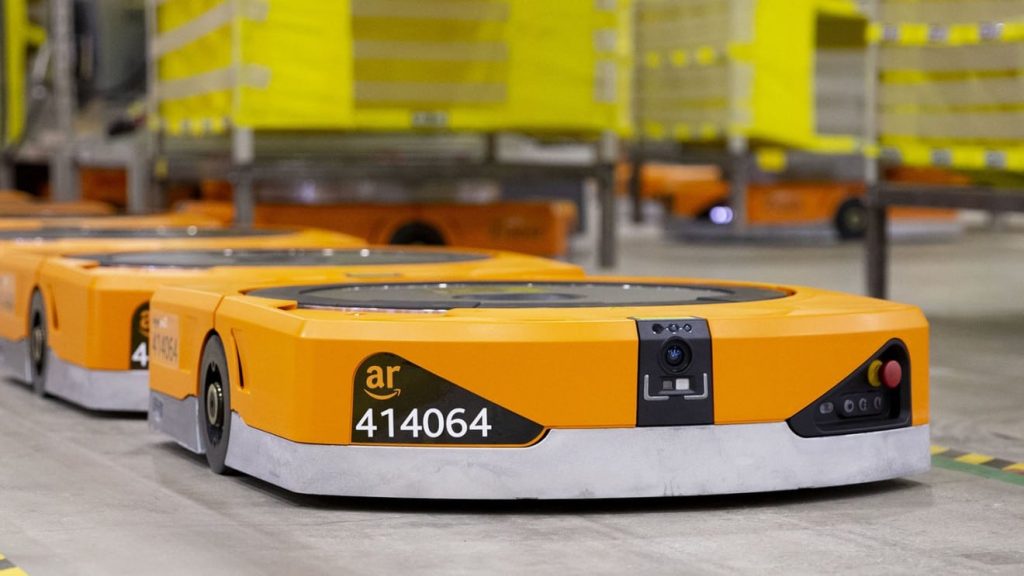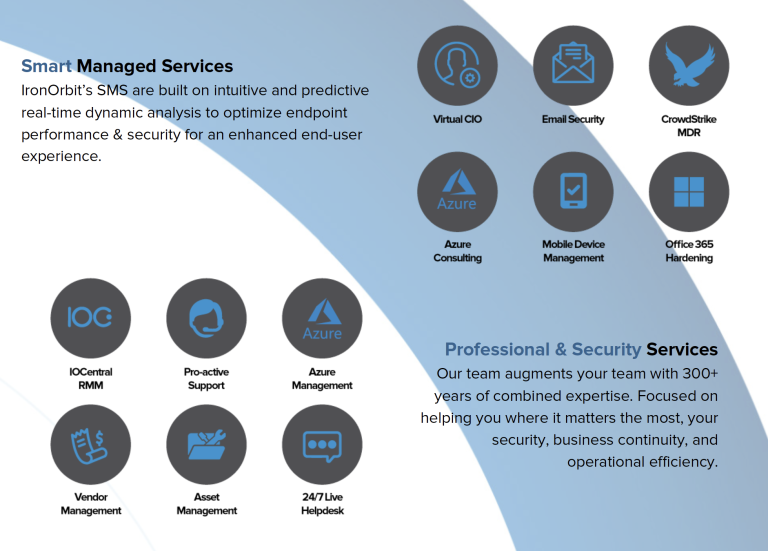2022 will continue to see the digitization and virtualization of society and business. The need for sustainability, increasing data volumes, and computer network speeds will drive digital transformation as companies move from a survival strategy to one of thriving.
As promised by Moore’s Law several decades ago, technology advancements continue to accelerate, but the speed at which these accelerations are occurring far outpaced earlier projections. The World Economic Forum’s Future of Jobs report says, “Developments in previously disjointed fields such as artificial intelligence and machine learning, robotics, nanotechnology, 3D printing, and genetics and biotechnology are all building on and amplifying one another. More than a third of the desired core skill sets of most occupations will be comprised of skills that at not yet considered crucial to the job today.”
When you think about what technologies might be game-changing for your company in 2022, you aren’t thinking about nanotechnology, quantum computing, or neural interfaces. As much as the tech giants may want to forecast a utopian future based on these technologies, what your company needs right now is technologies that will help you get more done with less, work from anywhere, and support your organizational objectives.
Let’s dive into some “right now” technologies that can be disruptive in a good way to your workflow and organization as a whole in 2022.
Digitization and Virtual Environments
The trend toward leveraging big data and the digitization of workflow within organizations makes virtual work environments possible. During the pandemic, everybody scrambled to set up home offices. The organizations that already had a virtual IT infrastructure had a much smoother transition. Employees just had to grab their computers from the office and take them home. Others had to work through it and make adjustments along the way. Most of those that didn’t transition went out of business.
It’s interesting to note that many business leaders are still grappling with the employee question of when (or if) they’ll be returning to an office environment. Sharyn Leaver writing for Forrester, predicts only 10% of companies will remain fully remote. Of the 60% planning to shift to some sort of hybrid model, one-third of those firms will fail in their first attempt at anywhere work.
New technologies are emerging in every area. Cloud computing continues to be at the forefront of every discussion because it is foundational to everything else. All IT services, applications, and cybersecurity protocols are delivered through the cloud.
Last October, at Gartner’s IT Symposium in Stamford, Connecticut, analysts reported that enterprises must move away from “lift and shift” migration and toward Cloud-Native Platforms (CNPs). The power of cloud computing provides scalable and elastic IT-related capabilities “as a service” to technology creators using internet technologies, delivering fast time to value and reduced costs. For this reason, Gartner predicts CNPs will serve as the foundation for more than 85% of new digital initiatives by 2025, up from less than 40% in 2021.
Aamer Baig writes in an article for McKinsey, “Most companies we know are well into their cloud journeys and understand notionally that the cloud offers a big opportunity. But many are struggling to capture the full value cloud offers. As in the adoption of any new technology, of course, hiccups are inevitable. But the fundamental issue is that companies are looking at the cloud as a source of IT productivity improvements rather than as a source of transformative value—which is more than $1 trillion, by our calculations.
Improvements in productivity and efficiency gains through cloud-migration programs can generate significant cost savings, but they essentially represent better ways of doing what IT already does. CIOs have a crucial role in getting the business to focus on the far bigger prize: the new businesses, innovative practices, and new sources of revenue that cloud either enables or accelerates.
One pharma company built its GxP-compliant IT environment on the cloud and uses an ecosystem of cloud services that connect with manufacturing instruments, robotics, and other systems. It has been using a combination of scaling, instance management, storage, workload processing, and data-warehousing services to accelerate vaccine development.
A large agriculture company put into the cloud the vast amounts of data it had accumulated on improving equipment maintenance and used advanced analytics to generate insights that became the basis for a new business offering to growers.
CIOs need to master cloud economics and target business areas that can benefit from the cloud’s advantages of speed, flexibility, and scale. As importantly, they need to consider how to make the large-scale changes to IT’s operating model that are needed to build the capabilities to generate new value. Fewer than 10 percent of technology leaders, however, say they are most focused on hiring cloud talent, placing it at the bottom of hiring priorities. That’s a red flag, especially considering that almost 50 percent of CIOs plan to migrate more than three-quarters of all workloads to the cloud in the next two years.”

The term artificial intelligence was coined by Dartmouth math professor John McCarthy in 1955.
AI will continue to improve and become ubiquitous in the year 2022. Even the most rudimentary of businesses are utilizing AI devices connected to nearly everything and using AI in:
- Voice Assistants
- Smart TVs
- Smart Whiteboards
- Language Translation
- Mobile Devices
- Robotic Process Automation
Companies using AI devices accumulate tremendous amounts of customer data. This well of information just then needs to be categorized and analyzed for pro-growth decisions based on real-time data. 2022 will see a dramatic jump in the utilization of AI due to the higher speeds available through the widespread adoption of the 5G network.
Before rushing out to buy the latest and greatest in AI technology, it’s a good idea to do some research or delegate an IT innovation team to do some preliminary homework. Become familiar with the capabilities of the technology and ensure it aligns with the mid-range and long-term strategy of your organization.
In a Harvard Business Review (HBR) article first published in 2018, Thomas Davenport and Rajeev Ronanki wrote about the importance of understanding which technologies perform what types of tasks, and the strengths and limitations of each. They write, “we encountered several organizations that wasted time and money pursuing the wrong technology for the job at hand.”
Since many organizations, even large enterprise companies, can lack the necessary in-house expertise to evaluate new and emerging technologies, it’s necessary for business leaders to work closely with IT to identify the right consultants to advise on high-priority projects.
Davenpot and Ronanki found that nearly a majority of cognitive technology projects had to do with robotics and automation. Business leaders have two schools of thought when it comes to automation. Some see automation as a way to eliminate full-time employees while others see it as a way to automate menial tasks in order to make better use of its people. Amazon for instance has been looking at ways for its people to devote more time to building new products. The Hands Off the Wheel program began in the retail management division to develop ways for machine learning to handle repetitive mundane work such as keeping its gigantic warehouses stocked with products to sell.
When companies make it clear that they are using AI to help people rather than replace them, they significantly outperform companies that don’t set that objective (HBR).
Alex Kantrowitz, author of ALWAYS DAY ONE: HOW THE TECH TITANS PLAN TO STAY ON TOP FOREVER (Portfolio, 2020), writes in an article for Harvard Business Review, that Amazon’s transition to Hands Off the Wheel took years to roll out and a great deal of training. “The retail-division employees were despondent at first, recognizing that their jobs were transforming. Yet in time, many saw the logic. ‘When we heard that ordering was going to be automated by algorithms, its like, ‘OK, what’s happening to my job?’”
According to Kantrowitz, Amazon didn’t implement this program to reduce headcount but rather free up personnel to invent and oversee new product development. Kantrowitz makes an essential point: “Had Amazon eliminated those jobs, it would have made its flagship business more profitable but would have missed the next new business opportunity.

Amazon has about 350,000 mobile drive unit robots working alongside hundreds of thousands of humans employed at fulfillment centers.
Entrepreneurship and seizing opportunities through leverage are at the heart of Amazon’s raison d’être. At no other time in history has it been as easy, fast, and inexpensive to start a new business. Amazon’s view is that it is a facilitator of entrepreneurship, providing the investment, platform, and resources to help build new businesses.
Amazon first opened its online shelves to small businesses in 2000. In 2018, the company created an internal Small Business Empowerment team. In a press announcement, CEO Dave Clark said, “We made the decision to open our store’s virtual shelves to third-party sellers. At the time, big-box retailers had been pushing small businesses out of the retail market. We bet that bringing selling partners into our store would not only be a win for customers who want vast product selection, low prices, and fast delivery, but it would also be a win for small businesses wanting to reach more customers, increase revenue and profits, and create good jobs.”
The number of US sellers who surpassed $1 million in sales grew another 15%. Kantrowitz concludes, “If Amazon is any indication, businesses that reassign employees after automating their work will thrive.”
A recent Forrester study shows that technology leaders will focus on human-centered technology transformations. Indicating that less than 15% of firms nominated digital transformation as a priority in 2022, the report suggests leading firms will use emerging technology to unlock the creativity of their employees and drive innovation that focuses on outcomes, not just financial results.
Subscription-Based Technologies
The trend of “______ as a Service” technologies has exploded in the past few years. 2022 will see more of this trend – for several good reasons.
Subscription-based business technologies:
- don’t force you to buy more than you are using
- are cost-effective
- are easily scalable up or down
- are flexible to match market fluctuations
- can be deployed easily and quickly
Maybe the best part about subscription-based technologies is the zero-coding needed to utilize them. You don’t have to have an in-house IT team. These technologies come pre-built and can integrate easily with other technologies in use within your business. In addition, because the technologies are virtual (in a cloud environment), your business has less exposure to cyber risk and a higher level of business continuity readiness.
Compliance Technologies
The more data that a company creates and gathers from the public, the greater their social responsibility becomes for the protection and use of that data. Whether your company needs to have transparency, governance, and accountability regarding data to protect your brand or you have legislative and industry-standard compliance mandates to adhere to, the technologies revolving around compliance are here to stay and will be growing throughout 2022. These new compliance technologies will help streamline your compliance efforts, minimizing the effort and money expended on compliance concerns.
Employee Wellness and Retention Technologies
The pandemic has brought a wave of resignations and shuffling of employees from one company to another. Business leaders are looking to technology to make employment at their organization more attractive to prospective – and current – employees. This desire to improve working conditions for employee retention has resulted in the utilization of many technologies. These advancements range from wearables that help employees monitor wellness for a work/life balance to new features built into ergonomic forms that reduce stress and improve employees’ workday in repetitive motion tasks.
Other considerations regarding employee wellness and retention technologies are tech that improves communication and collaboration on tasks and incorporates that “water cooler” chat function lost in the social distancing and work-from-home exodus of 2020.
By using tech to reincorporate that human connection into the virtual workplace, companies are helping to give their employees more of a sense of camaraderie and belonging – rather than isolation.
In Conclusion:
Your business, like many others, is reliant upon technology to maintain your competitive edge. It’s important to know what technologies other companies are leveraging – both within your industry and the broader marketplace. But knowing that other companies are having success with or planning on implementing game-changing tech within their organizations isn’t enough. Companies that take decisive action will face the fast-paced challenges of the next few years much better than those that are more cautious. Combine strategic planning with bold decision-making as you prioritize your technology objectives for the next 12 months. You must have a trusted IT partner to vet those technologies and advise you about their potential ROI within your particular business.
2022 is shaping up to be a year of both promise and uncertainty, but one thing is sure: companies that build a platform to embrace new tech within their workflow will have an advantage out of the starting gate.














